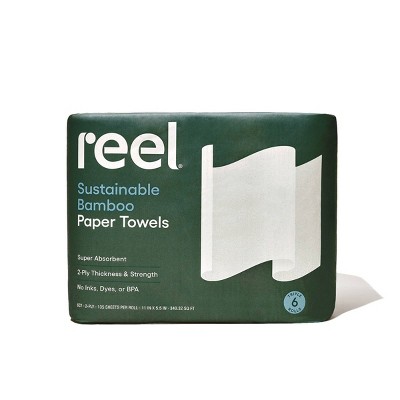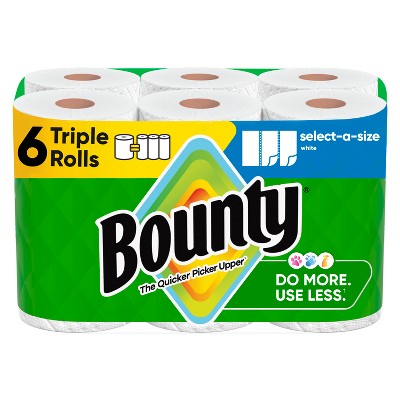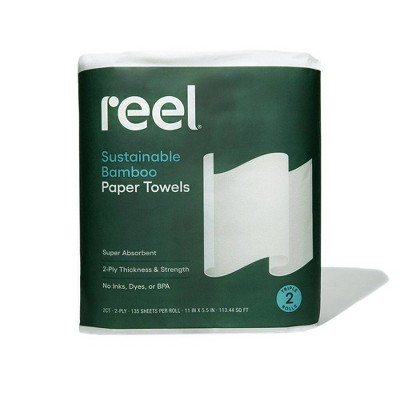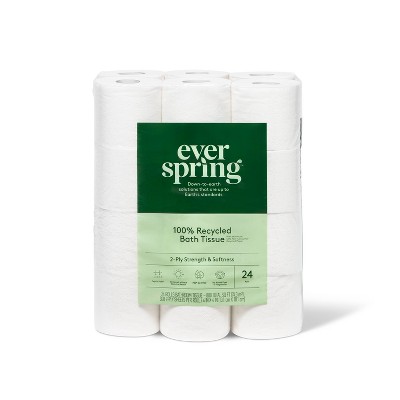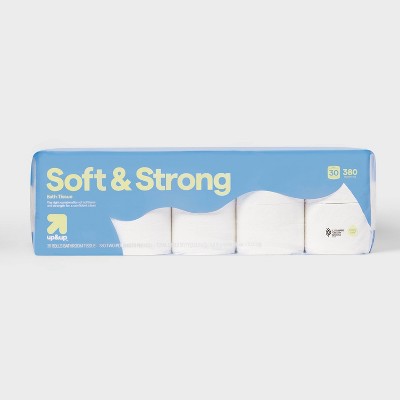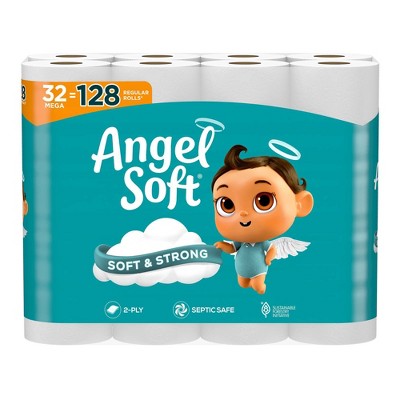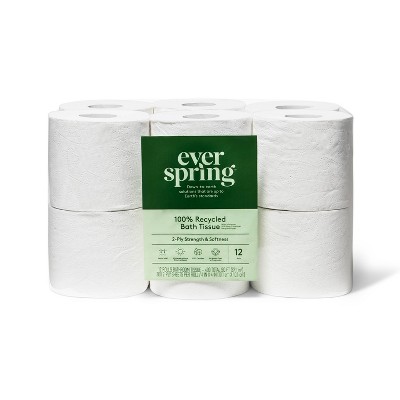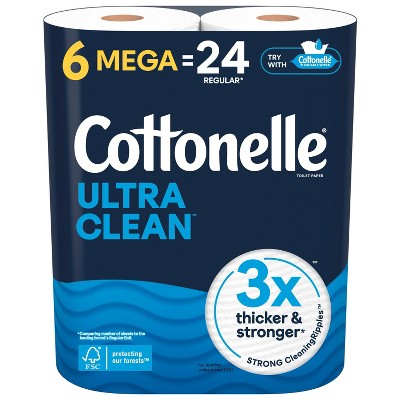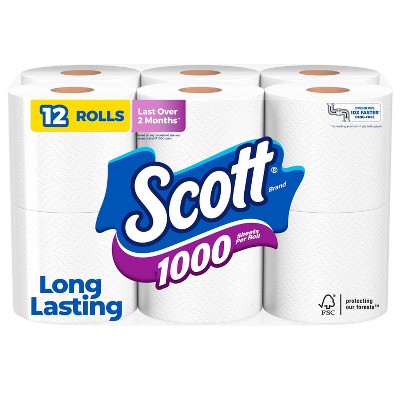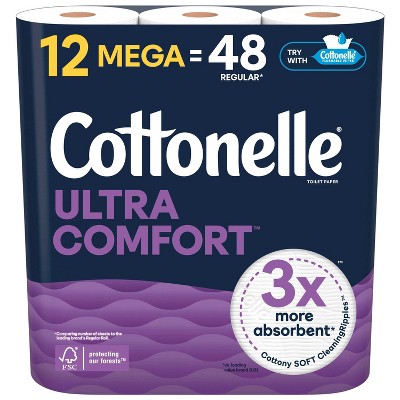Sponsored




Reel Paper Premium Bamboo Toilet Paper
$14.99 ($0.42/100 count)
In Stock
Eligible for registries and wish lists
At a glance
Sponsored
About this item
Highlights
- 100% bamboo & tree-free
- Biodegradable & sustainable
- 3-ply for extra softness
- Fragrance & chlorine free
- Zero plastic, even our tape!
- No inks, dyes
- BPA free
- Over 3 million rolls sold!
Description
Give yourself a feel-good moment every day with reel. We’ve designed our premium tree-free, dye-free, biodegradable toilet paper rolls to complement the room they’re in. In one simple swap, you can make your home more sustainable—without sacrificing style or comfort. Not only is our toilet paper BPA and chlorine free, it’s 3-ply and 100% bamboo, making it extra soft AND extra strong. With reel, you can be proud of your paper, because with every plastic-free roll you unwrap, you’re taking part in something bigger. In the last year alone, we have:
● Eliminated more than 1M pieces of single-use plastic
● Over 40,000 trees planted
We are committed to creating products that are better for the planet and that includes how we package our products. All of our products are packaged in eco-friendly materials that are sustainable, recyclable, and always plastic-free. Packaging switched from plastic to paper, aluminum, steel, or glass - our packaging switched from plastic to paper & recyclable cardboard is an easy change to help reduce single-use plastics. We can’t wait for you to join us in making an even greater impact, simply by adding reel to your everyday routine.
● Eliminated more than 1M pieces of single-use plastic
● Over 40,000 trees planted
We are committed to creating products that are better for the planet and that includes how we package our products. All of our products are packaged in eco-friendly materials that are sustainable, recyclable, and always plastic-free. Packaging switched from plastic to paper, aluminum, steel, or glass - our packaging switched from plastic to paper & recyclable cardboard is an easy change to help reduce single-use plastics. We can’t wait for you to join us in making an even greater impact, simply by adding reel to your everyday routine.
Sheets Per Roll: 300
Sustainability Claims: Compostable, Biodegradable, Renewable Material, Plant-Based, Renewable Resource
Count: 12 Rolls
Features: Septic-Safe
TCIN: 81656337
UPC: 860003777930
Item Number (DPCI): 253-06-0233
Origin: Imported
If the item details aren’t accurate or complete, we want to know about it.
Shipping details
Estimated ship dimensions: 8.69 inches length x 9.02 inches width x 12.98 inches height
Estimated ship weight: 4.49 pounds
Return details
This item can be returned to any Target store or Target.com.
This item must be returned within 90 days of the date it was purchased in store, shipped, delivered by a Shipt shopper, or made ready for pickup.
See the return policy for complete information.
Frequently bought together
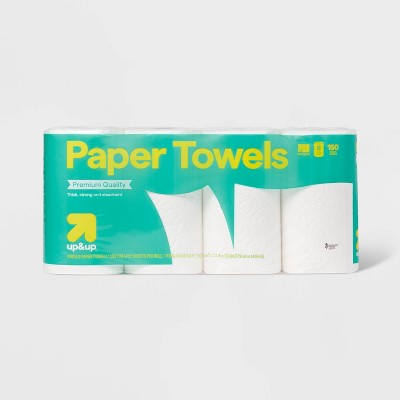
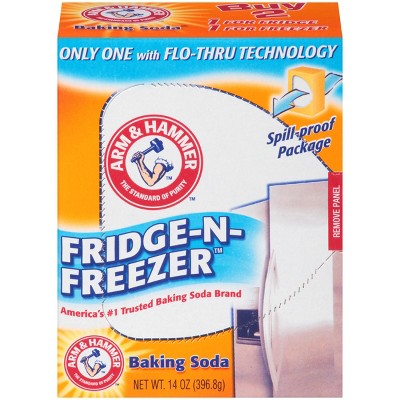
Guests also viewed
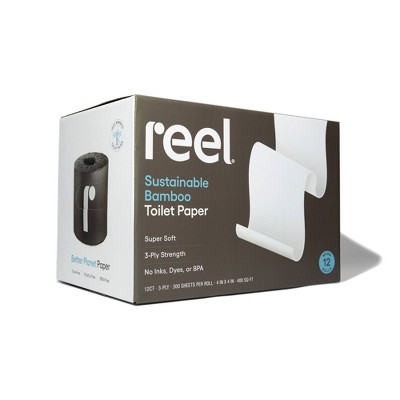
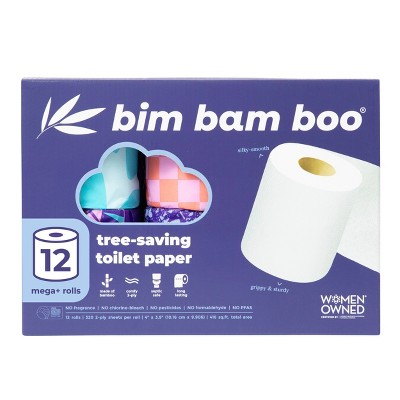
$13.49($0.35/100 count)
4 out of 5 stars with 137 ratings
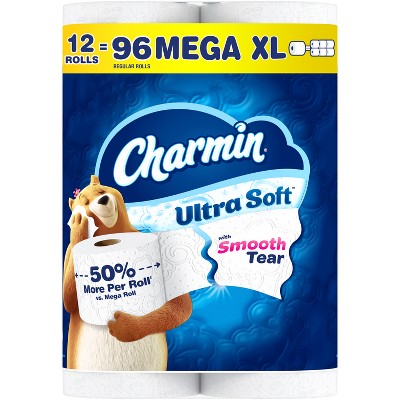
Discover more options

$13.49($0.35/100 count)
4 out of 5 stars with 137 ratings
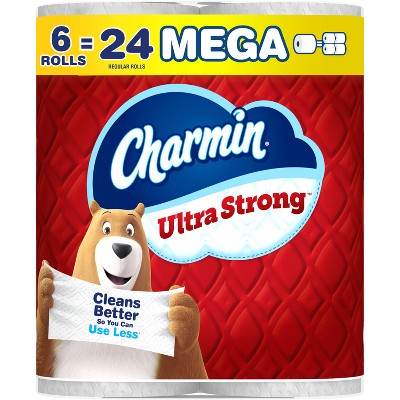
Related Categories
4.8 out of 5 stars with 6362 reviews
quality: 4.46 out of 5
softness: 3.94 out of 5
thickness: 4.33 out of 5
value: 4.1 out of 5
82% would recommend
830 recommendations
5 out of 5 stars
Thumbs up graphic, would recommend
6 December, 2025Verified purchase
(no review title)
Would love to have it just a little softer but does the job and better for you than the "big brands"
5 out of 5 stars
4 December, 2025
originally posted on Reel

Literally Amazing
Wow! I am astonished at the quality of these tissues. Extremely soft and durable for a good sneeze (or two!). Honestly, my main reason for the purchase (at Target) was the design of the packaging—I am so sick of the flowers—finally, a neutral tissue box design that blends in with my decor and doesn’t scream, “Hey, need to blow your nose?!” Like, for real. Bonus points that they’re environmentally friendly while being as soft and durable as the competition (if not more so!). Not really much of a price difference from the typical everyday brands. Also, they don’t create any airborne dust for those sensitive; you know what I mean! Highly recommend for those who who are looking to be eco-consious and/or stylish. I will be buying another 4-pack long before I run out. In love!! <3
5 out of 5 stars
2 December, 2025
originally posted on Reel

Everything's good it's a good
Everything's good it's a good product and anything to keep from using trees
5 out of 5 stars
30 November, 2025
originally posted on Reel

Soft & thick!
This tp is very comfortable, it feels good to not compromise quality for sustainability.
5 out of 5 stars
29 November, 2025
originally posted on Reel

Great quality
This is a durable toilet tissue. Great quality with just the right amount of softness. And I love that it is good for the environment and saves cutting down trees! Also love the delivery right to my home so it is super convenient.
1 out of 5 stars
Thumbs down graphic, would not recommend
29 November, 2025Verified purchase
BAIT & Switch ** Not the Real Reel**
BAIT & Switch!!! if you have been buying this paper for a long time and you haven't bought it to restock in the last several months pay close attention. This is a cheap, rip-off, knockoff product masquerading as the original fantastic Reel paper we all came to know and love. Target should seriously consider removing this item from their inventory completely. Reel if you are watching: It is not fair to customers to completely change a product as intimate and as specific as toilet paper and then continue to package it and market it the same way. This toilet paper now is in the same category as the garbage one ply sheets that you can get at ALDI when you're scrounging on a budget. Never will I buy REEL again. I can't even believe that they would ruin such a magnificent product. It's awful now. Target, get it off the shelves - you're misleading your customers into buying a product that is no longer what it was. Shameful. Reel = Overpriced Garbage.
1 reply from Reel Paper team - 4 days ago
Hi Jillian, thanks for sharing your feedback. We're aware of a now-resolved issue affecting some retail boxes. Please email our customer support team at hello@reelpaper.co and we'll be able to take care of that for you!
5 out of 5 stars
Thumbs up graphic, would recommend
29 November, 2025Verified purchase
(no review title)
I love this paper product. It has a cute pattern and it is soft and let’s not forget it’s good for the environment.
5 out of 5 stars
24 November, 2025Verified purchase
(no review title)
No bleach or other toxic chemicals, 100% clean. Love the texture, absorbency, stronger than your standard toilet paper, and good size roll all while being sustainable.
5 out of 5 stars
23 November, 2025
originally posted on Reel

This was our first purchase
This was our first purchase of the Reel Bamboo Toilet Paper. We like the texture and thickness better than that of the first bamboo toilet paper we purchased elsewhere.
5 out of 5 stars
20 November, 2025Verified purchase
(no review title)
That's fine and carried on smoothly.
5 out of 5 stars
19 November, 2025
originally posted on Reel

Happy we stumbled across this product
We have slowly transitioning different elements of our life to sustainable products. We have enjoyed the quality - as it doesn't instantly disintegrate when it comes in contact with water, and is not grating against our parts. This coupled with a bidet, decreased how much we went through, especially during menses.
5 out of 5 stars
Thumbs up graphic, would recommend
19 November, 2025Verified purchase
Reel-y Great
This sturdy tp saves trees and our planet and is sustainable since it's bamboo. Yes, it costs more, but we use less and knowing we help the planet and those who live here is a comfort.
5 out of 5 stars
18 November, 2025
originally posted on Reel

I love these rolls
I love these rolls and I really like the idea of the natural ingredients
5 out of 5 stars
Thumbs up graphic, would recommend
17 November, 2025Verified purchase
Bamboo as soft as Angel Soft
Added bonus that this Earth-friendly toilet paper comes in recyclable paper wrap in a recyclable cardboard box. No plastic. The company thought this mission through, but doesn't charge more per sheet than comparable Charmin packages.
5 out of 5 stars
17 November, 2025
originally posted on Reel

Reely good
This TP has substance, texture and strength, therefore one can use less and the roll lasts longer. Love the bamboo paper made with non toxic ingredients.
5 out of 5 stars
17 November, 2025Verified purchase
(no review title)
Love the quality
5 out of 5 stars
Thumbs up graphic, would recommend
16 November, 2025Verified purchase
Best butt wiper ever!!!!
This is the best toilet paper I’ve ever used. It does not pill off on you and is strong and soft. Bonus is it’s better for the environment.
5 out of 5 stars
14 November, 2025Verified purchase
Quality
Best TP EVER !!!
5 out of 5 stars
14 November, 2025
originally posted on Reel

Quality toilet paper
Excellent quality and environmentally sustainable!
1 out of 5 stars
13 November, 2025
originally posted on Reel

Used to be great, product changed in 2025
I used to LOVE this toilet paper. Bought it religiously. It was a single, thick enough, soft, textured sheet that left little to nothing behind. In the fall of 2025, the product changed. My most recent boxes have been shockingly different. It is now multiple, ultra thin sheet with a similar texture that falls apart and leaves wads of paper in my lady parts. I can't say that I appreciate picking out wads of toilet paper after going to the bathroom. I also have to use more because it falls apart on me.

